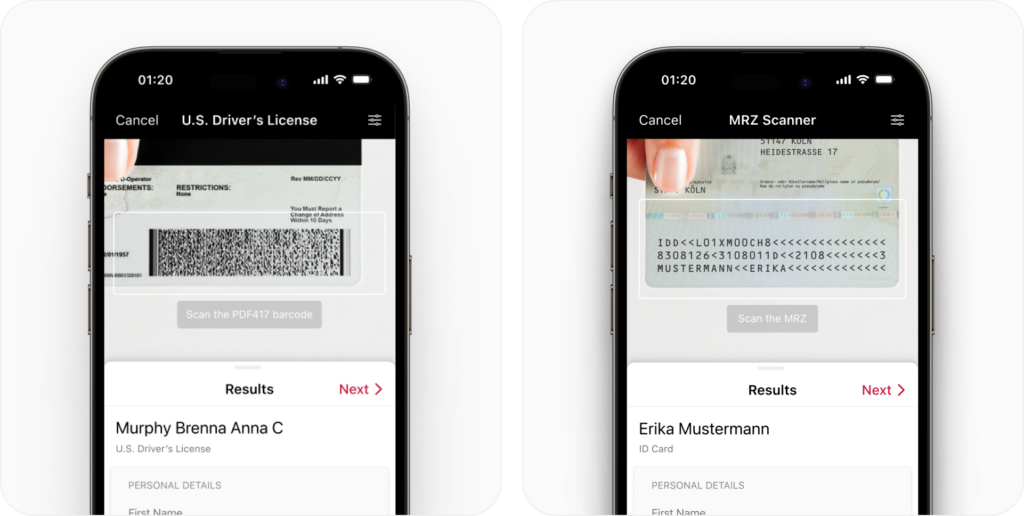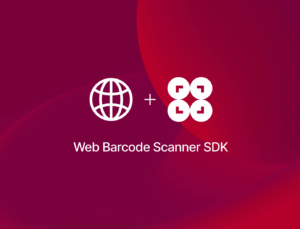Counterfeit documents are a serious challenge for industries from retail and banking to transportation and hospitality. As forging methods become more sophisticated, it gets harder to identify fakes. In this article, we explore the uses of fake identity documents, and how scanning solutions help combat them through faster and more accurate authenticity verification.
A brief history of fake IDs
In 1917, the U.S. Congress passed the Eighteenth Amendment, illegalizing the making, transporting and selling of alcohol. Despite the restrictions, the demand for alcoholic beverages remained high. Very quickly, speakeasies opened in the big cities, attracting many Americans struggling with the prohibition. As a result, individuals sought to gain access to hidden speakeasies and secret gatherings, leading to a growing need for false identification. And that’s when forgery of driver’s licenses and IDs, took off.
During this era, formal identification was not as standardized as it is today, making it simple for forgers to create convincing fakes. The lack of security features in the official documents of the time, combined with limited means of verification, made it challenging to detect fraudulent documents. Additionally, the absence of centralized registers and the reliance on paper records made it difficult to cross-reference an individual’s identity quickly.
Evolution of techniques
Printing technology and materials soon improved significantly, allowing the creation of more convincing fakes. With the advent of digital technology, the production of fakes entered a new era. With sophisticated software and equipment, fraudsters could now create forged documents that could barely be distinguished from real ones.
To combat this, authorities introduced security features such as holograms and UV ink, attempting to stay one step ahead. Fraudsters, however, adapted. Counterfeit IDs and driver’s licenses today often include scannable barcodes or magnetic strips, holograms, and UV-reactive elements, making them very hard to spot.
Despite all countermeasures, fake IDs continue to be a widespread problem across a range of industries.
Fake ID use today
According to a Lantern survey, 69% of college students have owned or used a fake ID. This is often a driver’s license, the most common primary ID in the United States. Additionally, every state has its own design, complicating checks. Crimes involving fake driver’s licenses contribute to significant societal costs, with underage drinking alone accounting for $61.9 billion annually in the United States.
Forged IDs are a widespread issue across many industries, though their exact purpose varies.
- Nightlife and entertainment: Here, fakes are primarily used by underage individuals to enter bars, clubs, and restricted venues or to purchase alcohol and tobacco illegally.
- Financial services: Counterfeits enable fraud, allowing individuals to open bank accounts, apply for credit, or launder money under false identities.
- Employment and immigration: Fake IDs are used to gain jobs without true authorization, misrepresent immigration status, or present false qualifications.
- Education: People use forged IDs to cheat on exams, misrepresent qualifications for admissions, or gain access to restricted areas.
- Healthcare and insurance: Individuals use fake documents to illegally obtain medical services and prescription drugs or falsely claim insurance coverage.
Risks and consequences
The use of fake IDs such as driver’s licenses can have grave consequences. To begin with, they facilitate underage drinking, which often results in unsafe behaviors because alcohol impairs judgment and delays reactions.
In the short term, this leads to alcohol poisoning and accidents – including fatal ones. Alcohol-related accidents frequently involve underage drivers. On the road, these young people don’t just endanger themselves, but also pose a serious risk to other road users. There are also long-term consequences: College students using fakes are particularly vulnerable to developing alcohol use disorders.
Meanwhile, businesses caught serving alcohol to minors face fines, license suspensions, and even permanent closure.
Using a fake identity document also spells legal trouble. It is a criminal offense – a misdemeanor or a felony, depending on the jurisdiction – and can carry jail sentences as well as fines of up to $100,000. This can leave young individuals with a criminal record, jeopardizing opportunities for scholarships, financial aid, housing, and future employment.
Additionally, fake ID use is directly linked to identity theft, as the personal information used to create a forged ID is often stolen from real people. Counterfeiters may use personal details like names, addresses, and social security numbers, often obtained through data breaches. This exposes the original person to identity theft, which can have long-lasting consequences.
Fraudulent IDs and driver’s licenses are a threat not only to individual lives, but also to businesses and public safety. To prevent fraud and protect public well-being, effective anti-forgery solutions are crucial.
The role of scanning technology in verifying identity documents
As fakes become more sophisticated, so do the methods to detect them. Today, there are multiple ways to check for a fake ID or driver’s license. Scanning solutions play a vital part in that verification process.
ID Card scanners often use pattern-checking technology and AI image processing to check whether an identity document might be counterfeit. The former analyzes the scan at a micro level to detect discrepancies in fonts, spacing, and complex imagery. The latter uses artificial intelligence to compare scanned documents against official templates and analyze thousands of data points in seconds.
Apart from these physical characteristics, the actual information on it can also be verified by using data capture solutions. Many IDs feature the same information both in human-readable and in machine-readable form. A data scanner allows you to immediately check whether both sets match up. Additionally, the extracted information can be checked against authoritative databases.
Scanbot SDK scanning solutions
The PDF417 barcode on the back of a U.S. driver’s license contains personal information about the cardholder, such as their name and date of birth. The Scanbot U.S. Driver’s License Scanner SDK parses the barcode in less than a second and returns human-readable information, which can then be cross-referenced against the details on the front of the license.
Many other identity documents also support PDF417 barcodes for this purpose. Another common feature is a Machine-Readable Zone, or MRZ.

The Scanbot MRZ Scanner SDK can quickly and reliably extract data from machine-readable zones on IDs and passports. All relevant data fields are extracted and returned as key-value pairs. Again, these can then be cross-referenced to the information described on the front of the identity document. The SDK can be easily integrated into web and mobile applications.
For added security, you can connect your app to a database for cross-referencing. This way, the extracted information can be verified against official information to confirm authenticity.
The MRZ Scanner SDK can also be deployed in use cases other than ID verification. For example, Red Cross Flanders uses our MRZ Scanner SDK to collect patient data. Previously, they used eID scanners together with paper forms – a complicated workflow that delayed treatment. Now, patients receive immediate care while volunteers simply scan their MRZ.
Conclusion
Forged official identity documents have been around as early as the 1920s. However, over the past decade it has become harder and harder to distinguish fake IDs from real ones. Fortunately, verification technology too has evolved. Scanners play a vital role in this development, partly by reducing input errors through reliable data extraction.
Fake IDs are widespread and affect not only individuals, but also businesses and society in general. The consequences can be life-changing, both for users and victims. Therefore, fast and reliable authenticity verification tools are a worthwhile investment to ensure public safety – and protect your business.
Interested in a scanning solution for your use case? Get in touch with us!
What is a US driver’s license scanner?
A US driver’s license scanner is hardware or software that reads and translates the cardholder’s information stored in the PDF417 barcode found on the back.
The Scanbot US Driver’s License Scanner SDK enables you to accurately scan and extract data as key-value pairs, all on your own device. It operates fully offline, without any connection to a server. Apart from the US Driver’s License Scanner SDK, we also offer a solution for German driver’s licenses.
How does the Scanbot US Driver’s License Scanner SDK work?
The Scanbot US Driver’s License Scanner SDK allows you to easily and reliably extract personal information using a barcode parser. After scanning the PDF417 barcode using the Barcode Scanner SDK, the raw data is processed by a parser, which converts it into key-value pairs for improved readability and easier backend processing.
What is the barcode on a US driver’s license?
The code on a US driver’s license is a PDF417 barcode. This 2D barcode is composed of multiple linear barcodes stacked on top of each other. It has a start pattern (left) and an end pattern (right), with the information itself encoded in the middle section.
The American Association of Motor Vehicle Administrators (AAMVA) has standardized both the design and data content of driver’s licenses in the US and Canada, including the use of PDF417 barcodes.
Can I use my phone to scan my driver’s license?
Yes. Any mobile device with a camera is suitable for scanning US driver’s licenses. Simply install a driver’s license scanning app or integrate a driver’s license scanner SDK into your own application. Enterprise-grade driver’s license scanning SDKs, such as the Scanbot SDK, can be easily integrated into an app within hours. With its ready-to-use UI components, developers can easily integrate the US Driver’s License Scanner SDK in their own app.
Want to try it out for yourself? Download our demo app or request a free 7-day trial license.
Does the Scanbot US Driver’s License Scanner SDK need an internet connection?
No, the SDK doesn’t need an internet connection as is a fully offline software solution. This guarantees that personal data remains secure, with all necessary data privacy measures upheld.
What should I consider when choosing a driver’s license scanning software?
A US Driver’s License Scanner SDK should deliver fast barcode scanning functionalities and accurately extract data for processing by your backend systems. It should increase your efficiency by reducing processing time and minimizing human errors.
Here are some important factors to consider:
Performance and accuracy: Make sure the scanning solution is able to scan barcodes quickly and accurately in all conditions. This includes scanning in low-light environments, scanning damaged or blurry barcodes, or scanning barcodes up close or from long distances. It should also extract data accurately, minimizing the risk of errors.
Compatibility: Look out for software that works seamlessly with your development environment and is compatible with the devices you plan to use, both mobile or desktop.
Data privacy: Since PDF417 codes include personal data, it is important that the scanning software has measures in place that protects sensitive information. The Scanbot US Driver’s License Scanner SDK operates entirely offline, ensuring full data privacy.
Developer support: Make sure your software provider offers sufficient support for developers to facilitate smooth integration. With Scanbot SDK, you’ll have access to detailed documentation and Slack and Teams channels for direct assistance.
Pricing model: Look for a pricing model that fits your business needs and scales without extra costs. Scanbot SDK offers an unlimited scanning model with a fixed annual fee, so you can use it without worrying about rising expenses.
How do I integrate the Scanbot US Driver’s License Scanner SDK into my app?
Our US Driver’s License Scanner SDK comes with detailed documentation that takes you through the integration process step by step. The entire integration doesn’t take longer than a few hours. If you need any additional support, we are happy to help you with our free support channels.
Which platforms is the Scanbot US Driver’s License Scanner SDK currently available for?
Our US Driver’s License Scanner SDK supports development for Native Android and iOS, JavaScript (Web), Flutter, React Native, Cordova, Capacitor / Ionic, Xamarin, and .NET MAUI. Try the Scanbot US Driver’s License Scanner SDK by downloading the demo app or requesting a free trial license.



